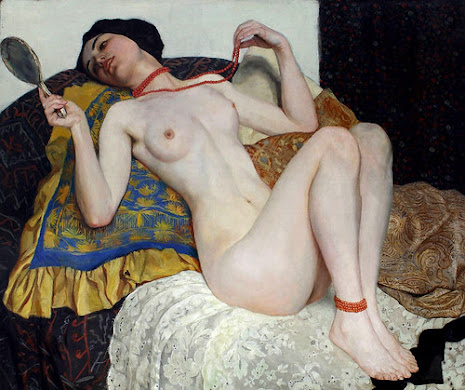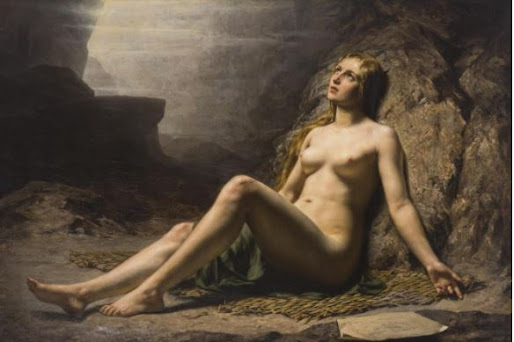Fumée d'Ambre Gris (Smoke of Ambergris) (1880)
John Singer Sargent and the color 'white'.
There is no color white in nature; it exists only in a can or tube of manufactured paint. Every beginner painter tends to use it straight from the tube; and, thus fails to capture the essence of sunlight or the subtle recesses of a distant wall. From Sargent we learn a trade secret: mix white with other colors to capture on canvas what you see in life. To imitate sunlight, a touch of orange is the secret. To render a remote corner, violet grey is the solution. Fumée is basically a monochromatic painting, but on examination you rarely see white “straight” from the tube.
The Painting
Sargent made sketches for this oil painting during a visit to Tangiers in 1879 and exhibited the finished canvas in the Paris Salon of the following year.
A woman stands beside a column in a tall Moroccan arch. She holds her veil over her head to form a tent to catch the smoke rising from a silver brazier on the floor in front of her. Her layered robes are a buttery, tea-soaked white, against the cooler mauve and verdigris tones of the whitewashed walls. The filtered overhead light and the orientation of the patterned carpet hint that she is at the edge of a vast room or interior courtyard.
She lifts her veil, and it becomes a parasol and tent, shading her from the indirect sunlight and capturing the fumes of the incense, directing them towards her face and her clothing. Although unveiled, her face is also hidden, for her gaze is withdrawn; the intensity of her engagement is not with us, nor with the painter, but with the ambergris incense. But we see that she is highly made-up, with kohl-darkened eyes and brows, rouged lips, painted fingernails, and a pair of rings on her little finger.








Comments
Post a Comment